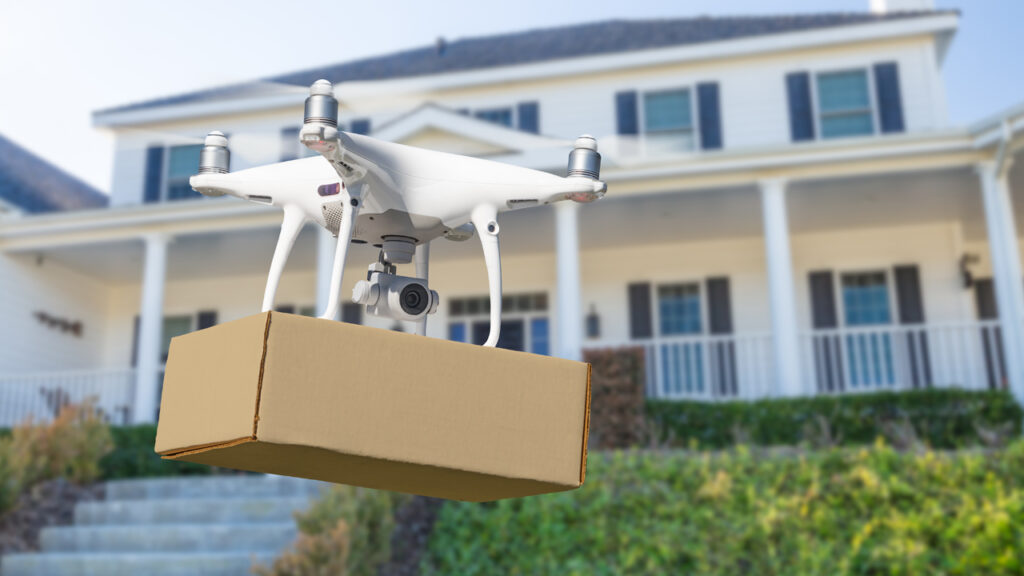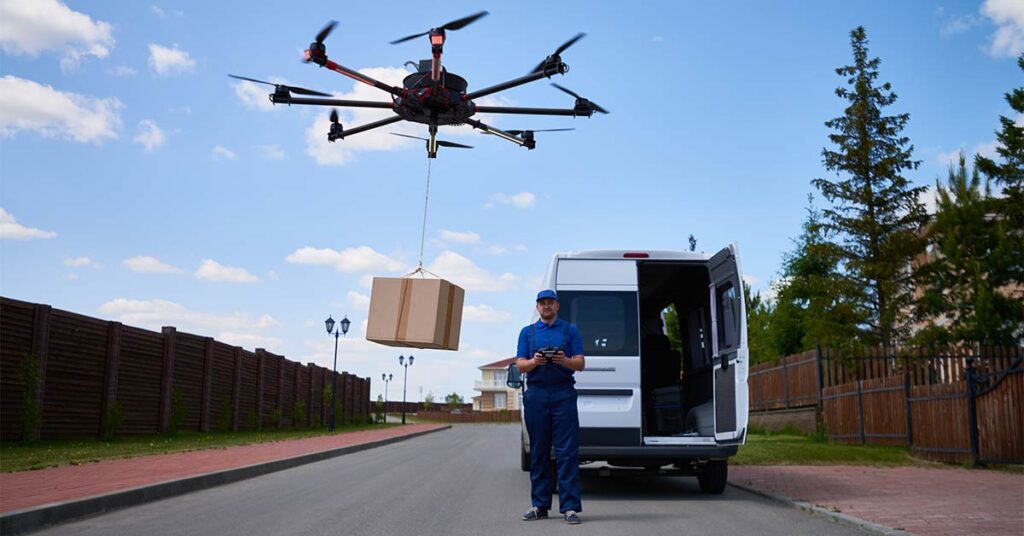As technology advances, industries increasingly turn to drones for innovative solutions that improve efficiency. The retail sector is no exception! In fact, retailers are at the forefront of drone adoption, utilizing them for various applications, with the most popular and intriguing being for delivering packages and goods to customers. Although drone delivery is an emerging trend that can revolutionize how we receive our orders, it raises questions and concerns about its feasibility and safety. In this blog post, we will explore the exciting and mysterious world of drone delivery services, discussing its potential benefits, challenges, and the impact it could have on the future of delivery services.

Benefits of drone delivery. Why is it an exciting addition?
Cost-effectiveness
Faster delivery times
Increased efficiency
Environmental benefits
Drone deliveries can also benefit the environment because they produce fewer carbon emissions than delivery trucks or vans, reducing carbon footprint. According to the Environmental Defense Fund, medium and heavy-duty trucks account for 23% of transportation-related greenhouse gas emissions in the US. These emissions are primarily due to burning fossil fuels such as diesel, gasoline, and natural gas. In contrast, drones are powered by rechargeable batteries and do not require any fuel to operate.
Delivery trucks and vans are common on roads and highways, contributing significantly to greenhouse gas emissions. According to the Environmental Defense Fund, medium and heavy-duty trucks account for 23% of transportation-related greenhouse gas emissions in the US. These emissions are primarily due to burning fossil fuels such as diesel, gasoline, and natural gas. A study conducted by the University of Washington found that using drones for delivery can reduce greenhouse gas emissions by up to 80% compared to traditional delivery methods.

Companies using drones for delivery services
Google Wing
Amazon
Domino's Pizza
UPS

Current challenges of drone delivery
Regulations
Safety Concerns
Drones can pose a risk to people, property, and other aircraft, particularly if they are not operated safely or if they malfunction. To address these concerns, many countries have established rules for drone operation, including requirements for registration, training, and licensing of drone pilots, as well as restrictions on where and how drones can be flown.
Privacy Concerns
Drones equipped with cameras or other sensors can potentially invade people's privacy by capturing images or other data without their consent. To mitigate that, many countries have established rules regarding the collection and use of data by drones, as well as restrictions on where and how drones can be flown.
Specific Regulations
Some countries have specific regulations regarding the use of drones for commercial purposes, such as delivery services. For example, in the United States, the Federal Aviation Administration (FAA) has established rules for commercial drone operation, including requirements for obtaining a waiver to operate drones beyond visual line of sight and restrictions on the weight and size of packages that drones can deliver.
Technical challenges
Obstacle Avoidance
To be effective for commercial purposes such as delivery, drones must be able to navigate through obstacles, fly long distances, and maintain stability in varying weather conditions. Achieving these capabilities requires a combination of advanced technology and careful design.
Long Duration Flights
Long-lasting flights are essential when it comes to deliveries. This requires both efficient propulsion systems and long-lasting batteries. Many commercial drones use electric motors, which are lightweight and efficient but require powerful batteries to achieve longer flight times. Some companies are also exploring the use of hybrid propulsion systems, which combine electric motors with traditional fuel engines to extend flight times.
Stability in Adverse Weather Conditions
Maintaining stability in varying weather conditions is also critical for drone operations. Wind, rain, and other weather conditions can make it difficult for drones to maintain stable flight paths. To address this, many drones are equipped with advanced flight control systems that can compensate for wind and other environmental factors. Some drones also use GPS and other sensors to maintain stable positions even in strong winds or other challenging weather conditions.

